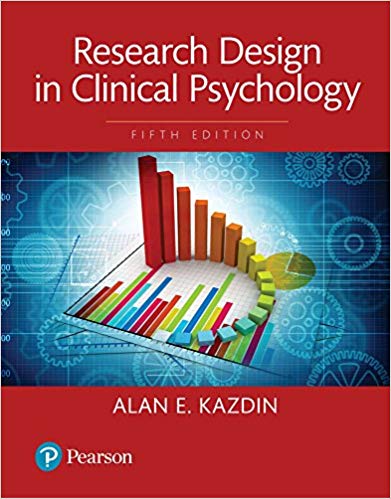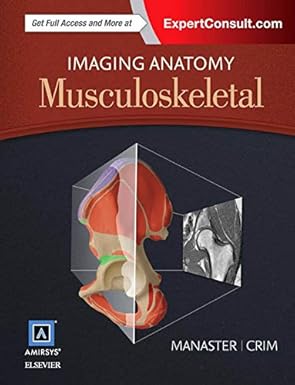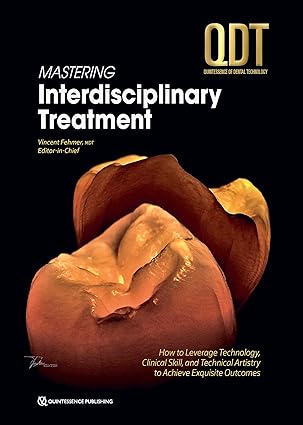For courses in Clinical Psychology
A practical and theoretically rich guide to conducting psychological research
Research Design in Clinical Psychology helps students achieve a thorough understanding of the entire research process — developing the idea, selecting methods, analyzing the results, and preparing the written scientific report. Drawing examples from clinical research, health, and medicine, author Alan Kazdin offers detailed coverage of experimental design, assessment, data evaluation and interpretation, case-control and cohort designs, and qualitative research methods. In addition to new pedagogical tools that guide students through the text, the Fifth Edition offers expanded coverage of key topic areas, such as cultural issues, scientific integrity, and recent changes in the publication and communication of research.
NOTE: This ISBN is for a Pearson Books a la Carte edition: a convenient, three-hole-punched, loose-leaf text. In addition to the flexibility offered by this format, Books a la Carte editions offer students great value, as they cost significantly less than a bound textbook.
Research Design in Clinical Psychology, Fifth Edition is also available via REVEL™, an interactive learning environment that enables students to read, practice, and study in one continuous experience.
چکیده فارسی
برای دوره های روانشناسی بالینی
راهنمای عملی و نظری غنی برای انجام تحقیقات روانشناسی
طراحی تحقیق در روانشناسی بالینی به دانشجویان کمک می کند تا به درک کاملی از کل فرآیند تحقیق دست یابند - توسعه ایده، انتخاب روش ها، تجزیه و تحلیل نتایج و تهیه گزارش علمی مکتوب. نویسنده آلن کازدین با ترسیم نمونههایی از تحقیقات بالینی، بهداشت و پزشکی، پوشش مفصلی از طراحی تجربی، ارزیابی، ارزیابی و تفسیر دادهها، طرحهای مورد شاهدی و کوهورت، و روشهای تحقیق کیفی ارائه میدهد. علاوه بر ابزارهای آموزشی جدید که دانش آموزان را از طریق متن راهنمایی می کند، نسخه پنجم پوشش گسترده ای از حوزه های موضوعی کلیدی، مانند مسائل فرهنگی، یکپارچگی علمی، و تغییرات اخیر در انتشار و ارتباطات تحقیق ارائه می دهد.
توجه: این ISBN برای نسخه a la Carte Books Pearson است: متنی راحت، دارای سه سوراخ و با برگ. علاوه بر انعطافپذیری ارائهشده توسط این قالب، نسخههای Books a la Carte ارزش زیادی به دانشآموزان ارائه میدهد، زیرا هزینه آنها بسیار کمتر از یک کتاب درسی صحافیشده است.
طراحی تحقیق در روانشناسی بالینی، ویرایش پنجم نیز از طریق REVEL™، یک محیط یادگیری تعاملی که دانشآموزان را قادر میسازد تا در یک تجربه مستمر مطالعه، تمرین و مطالعه کنند، در دسترس است. p>
ادامه ...
بستن ...
Ebook details:
عنوان: Research Design in Clinical Psychology -- Books a la Carte (5th Edition) (9780205992089) Alan E. Kazdin
نویسنده: Books
ناشر: Pearson; 5 edition (April 22, 2016)
زبان: English
شابک: 0205992080, 978-0205992089
حجم: 350 Mb
فرمت: Image pdf with ocr
ادامه ...
بستن ...
Title Page
Copyright Page
Brief Contents
Contents
Preface
Acknowledgments
About the Author
1 Introduction
1.1 Why Do We Need Science at All?
1.1.1 Rationale
1.2 Illustrations of Our Limitations in Accruing Knowledge
1.2.1 Senses and Their Limits
1.2.2 Cognitive Heuristics
1.2.3 Additional Information Regarding Cognitive Heuristics
1.2.4 Memory
1.2.5 General Comments
1.3 Methodology
1.3.1 Definition and Its Components
1.3.2 Using Methodology to Answer Critical Questions
1.4 A Way of Thinking and Problem Solving
1.4.1 The Role of Theory
1.4.2 Findings and Conclusions
1.4.3 Additional Information Regarding Findings and Conclusions
1.4.4 Parsimony
1.4.5 How Parsimony Relates to Methodology
1.4.6 Plausible Rival Hypothesis
1.4.7 An Example of Plausible Rival Hypothesis
1.5 The Semmelweis Illustration of Problem Solving
1.5.1 Illustration: Saving Mothers from Dying
1.5.2 Additional Information Regarding the Semmelweis Illustration
1.5.3 A New Procedure
1.5.4 General Comments
2 Internal and External Validity
2.1 Types of Validity
2.2 Internal Validity
2.3 Threats to Internal Validity
2.3.1 History
2.3.2 Maturation
2.3.3 Testing
2.3.4 History, Maturation, and Testing Combined
2.4 Instrumentation as a Threat to Internal Validity
2.4.1 Some Examples Involving Instrumentation
2.4.2 Additional Information on Instrumentation
2.4.3 Response Shift
2.5 Additional Threats to Internal Validity
2.5.1 Statistical Regression
2.5.2 Three Ways to Help Protect Against Statistical Regression
2.5.3 Selection Biases
2.5.4 Attrition
2.5.5 Diffusion or Imitation of Treatment
2.5.6 Special Treatment or Reactions of Controls
2.5.7 Additional Information on Reactions of Controls
2.6 When and How These Threats Emerge
2.6.1 Poorly Designed Study
2.6.2 Well-Designed Study but Sloppily Conducted
2.6.3 Well-Designed Study with Influences Hard to Control during the Study
2.6.4 Well-Designed Study but the Results Obscure Drawing Conclusions
2.7 Managing Threats to Internal Validity
2.7.1 General Comments
2.8 External Validity
2.9 Threats to External Validity
2.9.1 Summary of Major Threats
2.9.2 Sample Characteristics
2.9.3 College Students as Subjects
2.9.4 Samples of Convenience
2.9.5 Underrepresented Groups
2.9.6 Additional Information on Underrepresented Groups
2.9.7 Narrow Stimulus Sampling
2.9.8 Additional Information on Narrow Stimulus Sampling
2.10 Additional Threats to External Validity
2.10.1 Reactivity of Experimental Arrangements
2.10.2 Reactivity of Assessment
2.10.3 Main Strategy for Combatting Reactivity
2.10.4 Test Sensitization
2.10.5 Multiple-Treatment Interference
2.10.6 Novelty Effects
2.10.7 Generality across Measures, Setting, and Time
2.10.8 Cohorts
2.11 When We Do and Do Not Care about External Validity
2.11.1 Proof of Concept (or Test of Principle)
2.11.2 Additional Information on Proof of Concept
2.12 Managing Threats to External Validity
2.12.1 General Comments
2.12.2 More General Comments on Managing Threats
2.13 Perspectives on Internal and External Validity
2.13.1 Parsimony and Plausibility
2.13.2 Priority of Internal Validity
2.13.3 Further Considerations Regarding Priority of Internal Validity
Summary and Conclusions: Internal and External Validity
3 Construct and Data-Evaluation Validity
3.1 Construct Validity Defined
3.2 Confounds and Other Intriguing Aspects of Construct Validity
3.3 Threats to Construct Validity
3.3.1 Attention and Contact with the Clients
3.3.2 Single Operations and Narrow Stimulus Sampling
3.3.3 Experimenter Expectancies
3.3.4 Cues of the Experimental Situation
3.4 Managing Threats to Construct Validity
3.4.1 General Comments
3.5 Data-Evaluation Validity Defined
3.6 Threats to Data-Evaluation Validity Defined
3.7 Overview of Essential Concepts of Data-Evaluation Validity
3.7.1 Statistical Test and Decision Making
3.7.2 Effect Size
3.8 Threats to Data-Evaluation Validity
3.8.1 Low Statistical Power
3.8.2 Subject Heterogeneity
3.8.3 Variability in the Procedures
3.8.4 Unreliability of the Measures
3.8.5 Restricted Range of the Measures
3.8.6 Errors in Data Recording, Analysis, and Reporting
3.8.7 Multiple Comparisons and Error Rates
3.8.8 Misreading or Misinterpreting the Data Analyses
3.9 Managing Threats to Data-Evaluation Validity
3.9.1 General Comments
3.10 Experimental Precision
3.10.1 Trade-Offs and Priorities
3.10.2 Holding Constant Versus Controlling Sources of Variation
Summary and Conclusions: Construct and Data-Evaluation Validity
4 Ideas that Begin the Research Process
4.1 Developing the Research Idea
4.2 Sources of Ideas for Study
4.2.1 Curiosity
4.2.2 The Case Study
4.2.3 Study of Special Populations
4.2.4 Additional Information Regarding Special Populations
4.2.5 Stimulated by Other Studies
4.2.6 Translations and Extensions between Human and Nonhuman Animals
4.2.7 Measurement Development and Validation
4.3 Investigating How Two (or more) Variables Relate to Each Other
4.3.1 Association or Correlation between Variables
4.3.2 Concepts That Serve as the Impetus for Research
4.3.3 Risk Factor
4.3.4 Understanding the Difference between a Correlate and a Risk Factor
4.3.5 Protective Factor
4.3.6 Causal Factors
4.3.7 Key Criteria for Inferring a Causal Relation
4.3.8 General Comments
4.4 Moderators, Mediators, and Mechanisms
4.4.1 Moderators
4.4.2 Moderator Research
4.4.3 Mediators and Mechanisms
4.4.4 Tutti: Bringing Moderators, Mediators, and Mechanisms Together
4.4.5 General Comments
4.5 Translating Findings from Research to Practice
4.5.1 Basic and Applied Research
4.5.2 Distinguishing Applied Research from Basic Research
4.5.3 Translational Research
4.5.4 Further Consideration Regarding Translational Research
4.6 Theory as a Guide to Research
4.6.1 Definition and Scope
4.6.2 Theory and Focus
4.7 Why Theory Is Needed
4.7.1 Some Additional Reasons Why Theory Is Needed
4.7.2 Generating Versus Testing Hypotheses
4.7.3 Further Considerations Regarding Generating Versus Testing Hypotheses
4.8 What Makes a Research Idea Interesting or Important?
4.8.1 Guiding Questions
4.8.2 More Information on Generating Guiding Questions
4.9 From Ideas to a Research Project
4.10 Overview of Key Steps
4.10.1 Abstract Ideas to Hypothesis and Operations
4.10.2 Moving to Operations Constructs and Procedures
4.10.3 Sample to Be Included
4.10.4 Research Design Options
4.10.5 Additional Information Regarding Research Design Options
4.10.6 Multiple Other Decision Points
4.11 General Comments
Summary and Conclusions: Ideas that Begin the Research Process
5 Experimental Research Using Group Designs
5.1 Subject Selection
5.1.1 Random Selection
5.1.2 More Information on Random Selection
5.2 Who Will Serve as Subjects and Why?
5.2.1 Diversity of the Sample
5.2.2 Dilemmas Related to Subject Selection
5.2.3 Samples of Convenience
5.2.4 Additional Sample Considerations
5.3 Subject Assignment and Group Formation
5.3.1 Random Assignment
5.3.2 Group Equivalence
5.3.3 Matching
5.3.4 Matching When Random Assignment is Not Possible
5.3.5 Perspective on Random Assignment and Matching
5.4 True-Experimental Designs
5.5 Pretest–Posttest Control Group Design
5.5.1 Description
5.5.2 An Example of an Randomized Controlled Trial (RCT)
5.5.3 Considerations in Using the Design
5.5.4 Additional Consideration Regarding Pretest–Posttest Design
5.6 Posttest-Only Control Group Design
5.6.1 Description
5.6.2 Considerations in Using the Design
5.7 Solomon Four-Group Design
5.7.1 Description
5.7.2 Considerations in Using the Design
5.8 Factorial Designs
5.8.1 Considerations in Using the Design
5.9 Quasi-Experimental Designs
5.10 Variations: Briefly Noted
5.10.1 Pretest–Posttest Design
5.10.2 Posttest-Only Design
5.11 Illustration
5.11.1 General Comments
5.12 Multiple-Treatment Designs
5.12.1 Crossover Design
5.12.2 Multiple-Treatment Counterbalanced Design
5.13 Considerations in Using the Designs
5.13.1 Order and Sequence Effects
5.13.2 Restrictions with Various Independent and Dependent Variables
5.13.3 Ceiling and Floor Effects
5.13.4 Additional Considerations Regarding Ceiling and Floor Effects
Summary and Conclusions: Experimental Research Using Group Designs
6 Control and Comparison Groups
6.1 Control Groups
6.2 No-Treatment Control Group
6.2.1 Description and Rationale
6.2.2 Special Considerations
6.3 Wait-List Control Group
6.3.1 Description and Rationale
6.3.2 Special Considerations
6.4 No-Contact Control Group
6.4.1 Description and Rationale
6.4.2 Special Considerations
6.5 Nonspecific Treatment or Attention-Placebo Control Group
6.5.1 Description and Rationale
6.5.2 More Information on Description and Rationale
6.5.3 Special Considerations
6.5.4 Ethical Issues
6.6 Treatment as Usual
6.6.1 Description and Rationale
6.6.2 Special Considerations
6.7 Yoked Control Group
6.7.1 Description and Rationale
6.7.2 More Information on Description and Rationale
6.7.3 Special Considerations
6.8 Nonrandomly Assigned or Nonequivalent Control Group
6.8.1 Description and Rationale
6.8.2 Special Considerations
6.9 Key Considerations in Group Selection
6.10 Evaluating Psychosocial Interventions
6.10.1 Intervention Package Strategy
6.10.2 Dismantling Intervention Strategy
6.10.3 Constructive Intervention Strategy
6.10.4 Parametric Intervention Strategy
6.11 Evaluating Additional Psychosocial Interventions
6.11.1 Comparative Intervention Strategy
6.11.2 Intervention Moderator Strategy
6.11.3 More Information on Intervention Moderator Strategy
6.11.4 Intervention Mediator/Mechanism Strategy
6.11.5 General Comments
Summary and Conclusions: Control and Comparison Groups
7 Case-Control and Cohort Designs
7.1 Critical Role of Observational Research: Overview
7.1.1 More Information on the Critical Role of Observational Research
7.2 Case-Control Designs
7.2.1 Cross-Sectional Design
7.2.2 Retrospective Design
7.2.3 More Information on Retrospective Design
7.2.4 Considerations in Using Case-Control Designs
7.2.5 Further Considerations in Using Case-Control Designs
7.3 Cohort Designs
7.3.1 Single-Group Cohort Design
7.3.2 Birth-Cohort Design
7.3.3 More Information on Birth-Cohort Design
7.3.4 Multigroup Cohort Design
7.3.5 More Information on Multigroup Cohort Design
7.3.6 Accelerated, Multi-Cohort Longitudinal Design
7.3.7 More Information on Accelerated, Multi-Cohort Longitudinal Design
7.3.8 Considerations in Using Cohort Designs
7.4 Prediction, Classification, and Selection
7.4.1 Identifying Varying Outcomes: Risk and Protective Factors
7.4.2 Sensitivity and Specificity: Classification, Selection, and Diagnosis
7.4.3 Further Considerations Regarding Sensitivity and Specificity
7.4.4 General Comments
7.5 Critical Issues in Designing and Interpreting Observational Studies
7.6 Specifying the Construct
7.6.1 Level of Specificity of the Construct
7.6.2 Operationalizing the Construct
7.6.3 Further Considerations Regarding Operationalizing the Construct
7.7 Selecting Groups
7.7.1 Special Features of the Sample
7.7.2 Selecting Suitable Controls
7.7.3 Additional Information on Selecting Suitable Controls
7.7.4 Possible Confounds
7.7.5 More Information on Possible Confounds
7.8 Time Line and Causal Inferences
7.9 General Comments
Summary and Conclusions: Case-Control and Cohort Designs
8 Single-Case Experimental Research Designs
8.1 Key Requirements of the Designs
8.1.1 Ongoing Assessment
8.1.2 Baseline Assessment
8.2 Stability of Performance
8.2.1 Trend in the Data
8.2.2 Variability in the Data
8.3 Major Experimental Design Strategies
8.4 ABAB Designs
8.4.1 Description
8.4.2 Illustration
8.4.3 Design Variations
8.4.4 Considerations in Using the Designs
8.5 Multiple-Baseline Designs
8.5.1 Description
8.5.2 Illustration
8.5.3 Design Variations
8.5.4 Considerations in Using the Designs
8.6 Changing-Criterion Designs
8.6.1 Description
8.6.2 Illustration
8.6.3 Design Variations
8.6.4 Considerations in Using the Designs
8.7 Data Evaluation in Single-Case Research
8.8 Visual Inspection
8.8.1 Criteria Used for Visual Inspection
8.8.2 Additional Information on Criteria Used for Visual Inspection
8.8.3 Considerations in Using Visual Inspection
8.9 Statistical Evaluation
8.9.1 Statistical Tests
8.9.2 Additional Information on Statistical Tests
8.9.3 Considerations in Using Statistical Tests
8.10 Evaluation of Single-Case Designs
8.10.1 Special Strengths and Contributions
8.10.2 Strength 1 of Single-Case Designs
8.10.3 Strengths 2 and 3 of Single-Case Designs
8.10.4 Strengths 4 and 5 of Single-Case Designs
8.10.5 Issues and Concerns
Summary and Conclusions: Single-Case Experimental Research Designs
9 Qualitative Research Methods
9.1 Key Characteristics
9.1.1 Overview
9.1.2 An Orienting Example
9.1.3 Definition and Core Features
9.1.4 Contrasting Qualitative and Quantitative Research
9.1.5 More Information on Contrasting Qualitative and Quantitative Research
9.2 Methods and Analyses
9.3 The Data for Qualitative Analysis
9.4 Validity and Quality of the Data
9.4.1 Validity
9.4.2 Qualitative Research on and with Its Own Terms
9.4.3 More Information on Key Concepts and Terms
9.4.4 Checks and Balances
9.5 Illustrations
9.5.1 Surviving a Major Bus Crash
9.5.2 Comments on This Illustration
9.5.3 Lesbian, Gay, Bisexual, and Transgender (LGBT) Youth and the Experience of Violence
9.5.4 Comments on This Illustration
9.5.5 Yikes! Why Did I Post That on Facebook?
9.5.6 Comments on This Illustration
9.6 Mixed Methods: Combining Quantitative and Qualitative Research
9.6.1 Motorcycle Helmet Use
9.6.2 Comments on This Example
9.7 Recapitulation and Perspectives on Qualitative Research
9.7.1 Contributions of Qualitative Research
9.7.2 Further Considerations Regarding Contributions of Qualitative Research
9.7.3 Limitations and Unfamiliar Characteristics
9.7.4 Unfamiliar Characteristics 1 and 2 of Qualitative Research
9.7.5 Unfamiliar Characteristics 3, 4, and 5 of Qualitative Research
9.7.6 General Comments
Summary and Conclusions: Qualitative Research Methods
10 Selecting Measures for Research
10.1 Key Considerations in Selecting Measures
10.1.1 Construct Validity
10.1.2 More Information on Construct Validity
10.1.3 Reasons for Carefully Selecting Measures
10.1.4 Psychometric Characteristics
10.1.5 More Information on Psychometric Characteristics
10.1.6 Sensitivity of the Measure
10.1.7 Diversity and Multicultural Relevance of the Measure
10.1.8 Core Features of Ethnicity, Culture, and Diversity
10.1.9 General Comments
10.2 Using Available or Devising New Measures
10.2.1 Using a Standardized Measure
10.2.2 Varying the Use or Contents of an Existing Measure
10.2.3 More Information on Varying the Use or Contents
10.2.4 Developing a New Measure
10.2.5 General Comments
10.3 Special Issues to Guide Measurement Selection
10.3.1 Awareness of Being Assessed: Measurement Reactivity
10.3.2 More Information on Awareness of Being Assessed
10.3.3 Countering Limited Generality
10.3.4 Use of Multiple Measures
10.4 Brief Measures, Shortened Forms, and Use of Single-Item Measures
10.4.1 Use of Brief Measures
10.4.2 Use of Short or Shortened Forms
10.4.3 Single or a Few Items
10.4.4 Considerations and Cautions
10.4.5 More Information Regarding Considerations and Cautions
10.5 Interrelations of Different Measures
10.5.1 Three Reasons for Lack of Correspondence among Measures
10.6 Construct and Method Variance
10.6.1 Using a Correlation Matrix
10.7 General Comments
Summary and Conclusions: Selecting Measures for Research
11 Assessment: Types of Measures and Their Use
11.1 Type of Assessment
11.1.1 Modalities of Assessment Used in Clinical Psychology
11.2 Objective Measures
11.2.1 Characteristics
11.2.2 Issues and Considerations
11.2.3 More Information on Issues and Considerations
11.3 Global Ratings
11.3.1 Characteristics
11.3.2 Issues and Considerations
11.3.3 More Information on Issues and Considerations
11.4 Projective Measures
11.4.1 Characteristics
11.4.2 Issues and Considerations
11.4.3 More Information on Issues and Considerations
11.5 Direct Observations of Behavior
11.5.1 Characteristics
11.5.2 More Information on Characteristics
11.5.3 Issues and Considerations
11.6 Psychobiological Measures
11.6.1 Characteristics
11.6.2 More Information on Characteristics
11.6.3 Issues and Considerations
11.7 Computerized, Technology-Based, and Web-Based Assessment
11.7.1 Characteristics
11.7.2 More Information on Characteristics
11.7.3 Issues and Considerations
11.8 Unobtrusiveness Measures
11.8.1 Characteristics
11.8.2 More Information on Characteristics
11.8.3 Issues and Considerations
11.9 General Comments
Summary and Conclusions: Assessment: Types of Measure and Their Use
12 Special Topics of Assessment
12.1 Assessing the Impact of the Experimental Manipulation
12.1.1 Checking on the Experimental Manipulation
12.2 Types of Manipulations
12.2.1 Variations of Information
12.2.2 Variations in Subject Tasks and Experience
12.2.3 Variation of Intervention Conditions
12.2.4 Additional Information on Variation of Intervention Conditions
12.3 Utility of Checking the Manipulation
12.3.1 No Differences between Groups
12.3.2 Keeping Conditions Distinct
12.4 Interpretive Problems in Checking the Manipulation
12.4.1 Effects on Manipulation Check and Dependent Measure
12.4.2 No Effect on Manipulation Check and Dependent Measure
12.4.3 Effect on Manipulation Check but No Effect on the Dependent Measure
12.4.4 No Effect on the Manipulation Check but an Effect on the Dependent Measure
12.4.5 General Comments
12.5 Special Issues and Considerations in Manipulation Checks
12.5.1 Assessment Issues
12.5.2 More Information on Assessment Issues
12.5.3 Data Analysis Issues: Omitting Subjects
12.5.4 More Information on Omitting Subjects
12.5.5 Intent-to-Treat Analyses and Omitting and Keeping Subjects in Separate Data Analyses
12.5.6 Pilot Work and Establishing Potent Manipulations
12.6 Assessing Clinical Significance or Practical Importance of the Changes
12.6.1 Most Frequently Used Measures
12.6.2 Further Considerations Regarding Most Frequently Used Measures
12.6.3 More Information on Most Frequently Used Measures
12.6.4 Other Criteria Briefly Noted
12.6.5 Further Considerations Regarding Other Criteria
12.6.6 Other Terms and Criteria worth Knowing
12.6.7 General Comments
12.7 Assessment during the Course of Treatment
12.7.1 Evaluating Mediators of Change
12.7.2 More Information on Evaluating Mediators of Change
12.7.3 Improving Patient Care in Research and Clinical Practice
12.7.4 More Information on Improving Patient Care in Research
12.7.5 General Comments
Summary and Conclusions: Special Topics of Assessment
13 Null Hypothesis Significance Testing
13.1 Significance Tests and the Null Hypothesis
13.1.1 More Information on Significance Tests
13.2 Critical Concepts and Strategies in Significance Testing
13.2.1 Significance Level (alpha)
13.3 Power
13.3.1 The Power Problem
13.3.2 Relation to Alpha, Effect Size, and Sample Size
13.3.3 More Information on Relations to Alpha, Effect Size, and Sample Size
13.3.4 Variability in the Data
13.4 Ways to Increase Power
13.4.1 Increasing Expected Differences between Groups
13.4.2 Use of Pretests
13.4.3 Varying Alpha Levels within an Investigation
13.4.4 Using Directional Tests
13.4.5 Decreasing Variability (Error) in the Study
13.5 Planning the Data Analyses at the Design Stage
13.6 Objections to Statistical Significance Testing
13.6.1 Major Concerns
13.6.2 Misinterpretations
13.6.3 More Information on Misinterpretations
13.6.4 Significance Testing and Failures to Replicate
13.6.5 General Comments
13.7 Hypothesis Testing: Illustrating an Alternative
13.7.1 Bayesian Data Analyses
13.7.2 More Information on Bayesian Data Analyses
13.7.3 General Comments
Summary and Conclusions: Null Hypothesis Significance Testing
14 Presenting and Analyzingthe Data
14.1 Overview of Data Evaluation
14.1.1 Checking the Data
14.1.2 Description and Preliminary Analyses
14.2 Supplements to Tests of Significance
14.2.1 Magnitude and Strength of Effect
14.2.2 Confidence Intervals
14.2.3 Error Bars in Data Presentation
14.2.4 Statistical Significance, Magnitude of Effect, and Clinical or Practical Significance
14.3 Critical Decisions in Presenting and Analyzing the Data
14.4 Handling Missing Data
14.4.1 Completer Analysis
14.4.2 Intent-to-Treat Analysis
14.4.3 Multiple Imputation Models
14.4.4 General Comments
14.5 Outliers and the Prospect of Deleting Data
14.6 Analyses Involving Multiple Comparisons
14.6.1 Controlling Alpha Levels
14.6.2 Considerations
14.7 Multivariate and Univariate Analyses
14.7.1 Considerations
14.8 General Comments
14.9 Special Topics in Data Analysis
14.9.1 Understanding and Exploring the Data
14.9.2 Research Based on Previously Collected Data
Summary and Conclusions: Presenting and Analyzing the Data
15 Cautions, Negative Effects, and Replication
15.1 Interpreting the Results of a Study
15.1.1 Common Leaps in Language and Conceptualization of the Findings
15.1.2 Meaning Changes of Innocent Words and One Variable “Predicts” Another
15.1.3 “Implications” in the Interpretation of Findings
15.1.4 Further Considerations regarding “Implications”
15.1.5 More Data Analyses Can Enhance Data Interpretation
15.1.6 Another Example of More Data Analyses Enhancing Data Interpretation
15.1.7 Searching for Moderators or Statistical Interactions
15.1.8 General Comments
15.2 Negative Results or No-Difference Findings
15.2.1 Ambiguity of Negative Results
15.3 Why Negative Results Are Useful
15.3.1 When Negative Results Are Interpretable
15.3.2 When Negative Results Are Important
15.3.3 Additional Examples of Negative Results Being Important
15.3.4 Further Considerations Regarding Importance of Negative Results
15.3.5 Special Case of Searching for Negative Effects
15.3.6 Negative Effects in Perspective
15.3.7 Further Considerations Regarding Negative Effects
15.4 Replication
15.4.1 Defined
15.4.2 Types of Replication
15.4.3 Expansion of Concepts and Terms
15.5 Importance of Replication
15.5.1 Reasons 1 and 2 for the Importance of Replication
15.5.2 Reasons 3, 4, and 5 for the Importance of Replication
15.5.3 Instructive but Brief Replication Examples
15.5.4 One Additional Replication Example
15.5.5 Renewed Attention to Replication
15.5.6 Additional Information Regarding Renewed Attention to Replication
15.5.7 The Reproducibility Project
Summary and Conclusions: Cautions, Negative Effects, and Replication
16 Ethical Issues and Guidelines for Research
16.1 Background and Contexts
16.2 Scope of Ethical Issues
16.3 Inherent Roles of Values and Ethics in Research
16.3.1 Values and Decisions in Research
16.3.2 Relevance to Psychological Research
16.3.3 Power Difference of Investigator and Participant
16.4 Critical Issues in Research
16.4.1 Deception
16.4.2 Further Considerations Regarding Deception
16.4.3 Debriefing
16.4.4 Further Considerations Regarding Debriefing
16.4.5 Invasion of Privacy
16.4.6 Sources of Protection
16.4.7 Special Circumstances and Cases
16.4.8 Further Considerations Regarding Special Circumstances
16.5 Informed Consent
16.5.1 Conditions and Elements
16.5.2 Important Considerations
16.5.3 Additional Important Considerations
16.5.4 Consent and Assent
16.5.5 Forms and Procedures
16.5.6 Certificate of Confidentiality
16.5.7 Letter and Spirit of Consent
16.6 Intervention Research Issues
16.6.1 Informing Clients about Treatment
16.6.2 Withholding the Intervention
16.6.3 Control Groups and Treatments of Questionable Efficacy
16.6.4 Consent and the Interface with Threats to Validity
16.6.5 General Comments
16.7 Regulations, Ethical Guidelines, and Protection of Client Rights
16.7.1 Federal Codes and Regulations
16.7.2 Professional Codes and Guidelines
16.7.3 More Information on Professional Codes and Guidelines
16.7.4 General Comments
Summary and Conclusions: Ethical Issues and Guidelines for Research
17 Scientific Integrity
17.1 Core Values Underpinning Scientific Integrity
17.2 Ethical Codes Related to Scientific Integrity
17.3 Critical Issues and Lapses of Scientific Integrity
17.3.1 Fraud in Science
17.3.2 More Information Regarding Fraud in Science
17.3.3 Questionable Practices and Distortion of Findings
17.3.4 More Information on Questionable Practices
17.3.5 Another Data Analysis Point
17.3.6 Plagiarism
17.3.7 Self-Plagiarism
17.4 Authorship and Allocation of Credit
17.4.1 Guidelines and Best Practices for Allocating Authorship
17.4.2 Special Circumstances and Challenges
17.5 Sharing of Materials and Data
17.5.1 “Big Data:” Special Circumstances Data Sharing
17.5.2 More Information on “Big Data”
17.5.3 When Not to Share Data
17.5.4 General Comments
17.6 Conflict of Interest
17.6.1 Procedures to Address Conflict of Interest
17.6.2 Other Conflicts of Interest Briefly Noted
17.7 Breaches of Scientific Integrity
17.7.1 Jeopardizing the Public Trust
17.8 Remedies and Protections
Summary and Conclusions: Scientific Integrity
18 Communication of Research Findings
18.1 Methodologically Informed Manuscript Preparation
18.2 Overview
18.3 Main Sections of the Article
18.3.1 Title of the Article
18.3.2 Abstract
18.3.3 Introduction
18.3.4 More Information on the Introduction
18.3.5 Method
18.3.6 Results
18.3.7 Discussion
18.3.8 Tables, Figures, Appendices, and Other Supporting Data
18.4 General Comments
18.5 Further Guides to Manuscript Preparation
18.5.1 Questions to Guide Manuscript Preparation
18.5.2 Formal Guidelines for Presenting Research
18.5.3 General Comments
18.6 Selecting a Journal
18.6.1 What Journal Outlets Are Available?
18.6.2 Some Criteria for Choosing among the Many Options
18.6.3 Additional Criteria for Consideration
18.7 Manuscript Submission and Review
18.7.1 Overview of the Journal Review Process
18.7.2 More Information on Overview of the Journal Review Process
18.7.3 You Receive the Reviews
18.7.4 General Comments
Summary and Conclusions: Communication of Research Findings
19 Methodology: Constantly Evolving along with Advances in Science
Additional Information on Methodology
19.1 The Dynamic Nature of Methodology
19.2 Research Design
19.2.1 Assessment
19.2.2 Data Evaluation and Interpretation
19.2.3 Ethical Issues and Scientific Integrity
19.2.4 Communication of Research Findings
19.2.5 General Comments
19.3 Importance of Methodological Diversity
19.4 Abbreviated Guidelines for a Well-(and Quickly) Designed Study
Summary and Conclusions: Methodology: Constantly Evolving along with Advances in Science
Glossary
A
B
C
D
F
G
H
I
L
M
N
O
P
Q
R
S
T
U
V
W
Y
References
End Notes
Credits
Name Index
A
B
C
D
E
F
G
H
I
J
K
L
M
N
O
P
Q
R
S
T
U
V
W
X
Y
Z
Subject Index
A
B
C
D
E
F
G
H
I
J
L
M
N
O
P
Q
R
S
T
U
V
W
Y
ادامه ...
بستن ...









![Clinical Management of Swallowing Disorders (6th Edition) [2025] - Orginal Pdf Clinical Management of Swallowing Disorders (6th Edition) [2025] - Orginal Pdf](https://dl.libsan.ir/images/1/12/Clinical Management of Swallowing Disorders_68fdc2997972e.webp)
